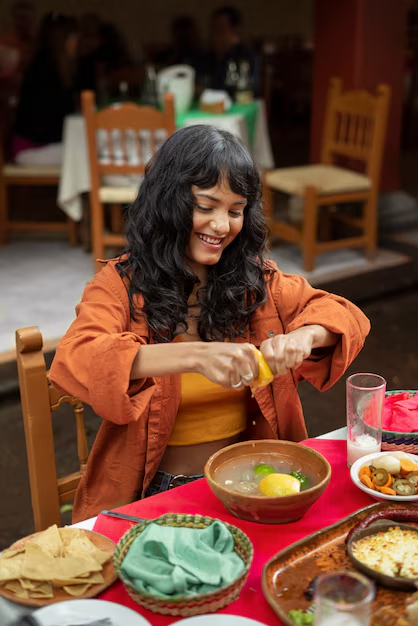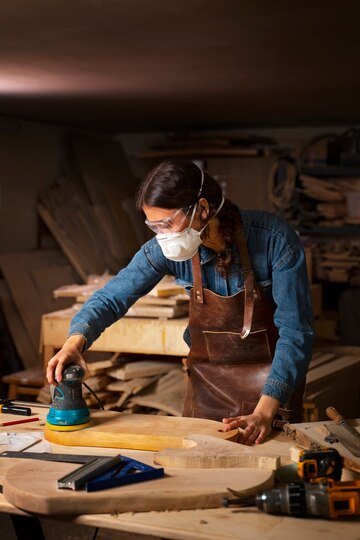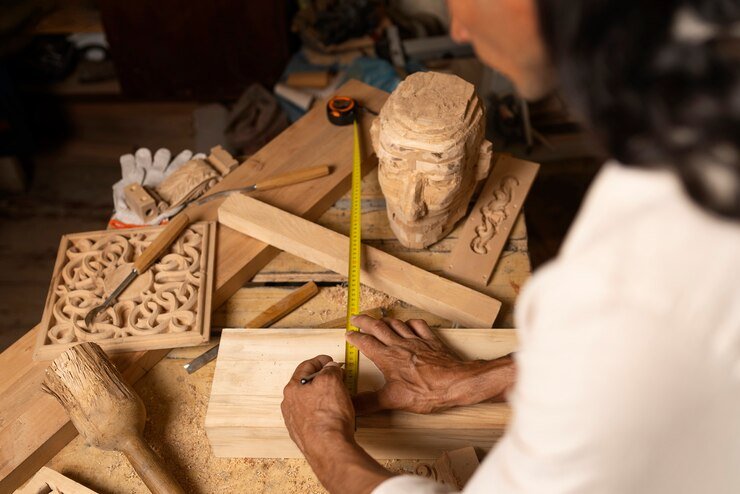Traditional Indian Crafts Revival and Market Opportunities
Introduction :
In recent years, there has been a notable resurgence of interest in traditional Indian crafts, driven by a global shift towards sustainability, cultural appreciation, and unique artisanal products. This revival presents significant opportunities not only for artisans and local communities but also for the broader market, encompassing both domestic and international consumers.
The Rich History of Indian Crafts :

Exploring Centuries-old Craftsmanship
India boasts a rich tapestry of crafts that have been passed down through generations. Each region of India has its own distinct traditions, techniques, and motifs, reflecting diverse cultural influences and historical contexts. From intricate embroidery in Gujarat to vibrant Madhubani paintings in Bihar, these crafts carry stories of heritage and skill.
Artisanal Heritage Across Regions
Artisans in India often specialize in crafts that are deeply rooted in their cultural and geographical contexts. For example, the Channapatna toys from Karnataka or the intricate Bidriware from Hyderabad showcase the meticulous craftsmanship and artistic prowess of local artisans.
Current Challenges Faced by Indian Crafts :

Economic Pressures and Globalization
Despite their cultural significance, many traditional crafts face challenges in the modern marketplace. Economic pressures, lack of infrastructure, and competition from mass-produced goods have threatened the livelihoods of artisans. Globalization has also posed challenges, as traditional markets shrink in the face of cheaper imports.
Impact on Artisan Communities
Artisan communities, often located in rural or economically disadvantaged areas, bear the brunt of these challenges. Without adequate support and market access, many artisans struggle to sustain their craft as a viable livelihood.
Government Initiatives to Promote Indian Crafts :
Policies and Funding for Artisanal Support
Recognizing the importance of traditional crafts, the Indian government has implemented various initiatives to support artisans. These include financial assistance, skill development programs, and incentives for promoting handmade products both domestically and internationally.
Case Studies of Successful Interventions
Initiatives like the “Make in India” campaign and the establishment of craft clusters have helped rejuvenate certain sectors of the handicraft industry. These efforts not only preserve cultural heritage but also contribute to local economic development.
Revival of Interest: Global Perspective :

International Recognition and Market Demand
In recent years, there has been a growing global appreciation for handmade, sustainable products with a unique cultural identity. Consumers are increasingly drawn to the stories behind the products they purchase, seeking authenticity and ethical production practices.
Influential Factors Driving Consumer Interest
Factors such as the rise of conscious consumerism, awareness of environmental impact, and desire for one-of-a-kind artisanal pieces have fueled the demand for Indian crafts in international markets. Artisans who can adapt to these trends stand to benefit from increased exposure and sales opportunities.
Market Opportunities for Indian Crafts :
Emerging Trends and Niche Markets
The global market offers numerous opportunities for Indian crafts, ranging from luxury boutiques to online marketplaces dedicated to handmade goods. Niche markets such as sustainable fashion, home decor, and artisanal gifts are particularly receptive to Indian craftsmanship.
Leveraging E-commerce Platforms
The advent of e-commerce has revolutionized the way Indian artisans reach consumers worldwide. Platforms like Etsy, Amazon Handmade, and artisanal marketplaces allow artisans to showcase their products, tell their stories, and connect directly with a global audience.

Sustainability in Indian Crafts :
Environmental and Social Impact
Indian crafts inherently promote sustainability by using natural materials, traditional techniques, and minimal energy consumption. Many artisans also adhere to ethical production practices, supporting fair trade principles and community empowerment.
Role of Ethical Consumerism
As consumers become more conscious of the environmental and social impact of their purchases, Indian crafts positioned as sustainable alternatives gain traction. This shift towards ethical consumerism presents a compelling marketing angle for artisans and craft-based enterprises.
Innovations in Traditional Craft Techniques
Fusion of Traditional and Contemporary Designs
While preserving traditional techniques, many artisans are innovating by incorporating contemporary designs and functionalities into their products. This fusion appeals to a broader audience, bridging the gap between traditional craftsmanship and modern aesthetics.
Examples of Modern Adaptations
From hand-block printed textiles adapted for contemporary fashion to eco-friendly home decor items crafted using ancient techniques, artisans are finding innovative ways to cater to evolving consumer tastes while staying true to their cultural roots.
Marketing Strategies for Indian Crafts :

Digital Marketing Tactics
In the digital age, effective marketing is crucial for the success of Indian crafts. Artisans and craft organizations can leverage social media platforms, content marketing, and search engine optimization (SEO) to enhance visibility, attract customers, and build brand recognition.
SEO for Artisanal Products
Optimizing product descriptions, using relevant keywords (such as “handmade Indian crafts” or “traditional artisan products”), and creating engaging content that tells the story behind each product can significantly improve search engine rankings and drive organic traffic.
Collaborations and Partnerships ;
Industry Collaborations for Market Expansion
Collaborations between artisans, designers, retailers, and NGOs can open new avenues for market expansion. Partnerships with ethical brands, cultural institutions, and international distributors can help artisans access new markets and increase their product reach.
Connecting Artisans with Global Retailers
Platforms that facilitate direct partnerships between artisans and global retailers enable artisans to navigate complex export procedures, adhere to quality standards, and meet the diverse preferences of international consumers.
Education and Skill Development :
Training Programs for Artisans
Investing in skill development and entrepreneurship training is essential for the sustainability of Indian crafts. Government-sponsored workshops, vocational training centers, and initiatives by NGOs and private organizations equip artisans with the skills needed to thrive in a competitive market.
Empowering the Next Generation
By passing down traditional knowledge and skills to younger generations, artisans ensure the continuity of their craft heritage. Education initiatives also empower artisans to adapt to changing market dynamics and explore new opportunities for growth.
Challenges in Market Penetration :
Overcoming Barriers to Entry
Despite the potential market opportunities, Indian artisans face several barriers to market penetration. These include logistical challenges, quality control issues, cultural barriers, and competition from mass-produced goods.
Logistics and Quality Control
Ensuring timely delivery, maintaining product quality, and meeting international standards are critical for building trust and credibility with consumers and retail partners. Streamlining logistics and implementing robust quality control measures can help artisans overcome these challenges.
Consumer Education and Awareness :
Importance of Storytelling in Craft Promotion
Effective storytelling plays a pivotal role in promoting Indian crafts. By sharing the cultural significance, craftsmanship techniques, and personal stories behind each product, artisans can forge emotional connections with consumers and differentiate their offerings in a crowded marketplace.
Communicating Cultural Significance
Educating consumers about the cultural significance and sustainable practices associated with Indian crafts not only enhances appreciation but also fosters a deeper understanding of the value of handmade products. Transparency in production processes builds trust and loyalty among consumers.
Impact of COVID-19 on Indian Crafts :

Resilience and Adaptation
The COVID-19 pandemic has posed unprecedented challenges for the handicraft sector, disrupting supply chains, reducing consumer spending, and limiting access to traditional markets. However, it has also accelerated digital transformation and online sales, providing opportunities for artisans to reach new audiences globally.
Digital Transformation of Craft Sales
Artisans who embraced digital platforms and e-commerce during the pandemic were better positioned to mitigate the impact of lockdowns and restrictions. Virtual craft fairs, online workshops, and social media campaigns enabled artisans to showcase their products and engage with customers despite physical distancing measures.
Conclusion :
The revival of traditional Indian crafts presents a promising path forward, driven by global demand for sustainable, culturally rich products. By leveraging digital innovation, embracing sustainable practices, and fostering collaborations, Indian artisans can not only preserve their cultural heritage but also thrive in a competitive global marketplace.
FAQs About Indian Crafts Revival and Market Opportunities :
1: What are some popular traditional Indian crafts?
Traditional Indian crafts include pottery, textile weaving, embroidery, metalwork, and wood carving, among others.
2: How can I support Indian artisans?
You can support Indian artisans by purchasing their products directly, promoting their work on social media, or advocating for fair trade practices.
3: Why is there a revival of interest in traditional Indian crafts?
The revival is driven by a global appreciation for handmade, sustainable products and efforts to preserve cultural heritage.
4: What role does digital marketing play in promoting Indian crafts?
Digital marketing helps artisans reach a broader audience, showcase their craftsmanship online, and improve sales through e-commerce platforms.
5: How can Indian crafts contribute to sustainable development?
Indian crafts promote sustainable development by preserving traditional skills, supporting local economies, and promoting eco-friendly practices.


